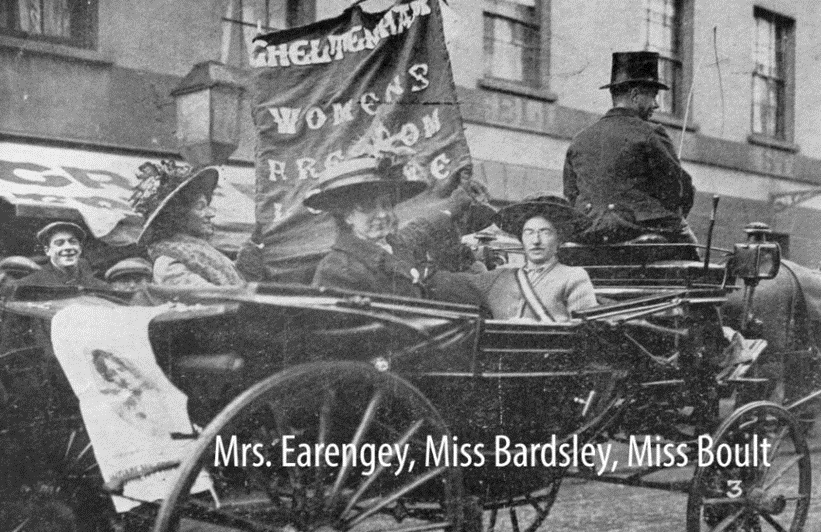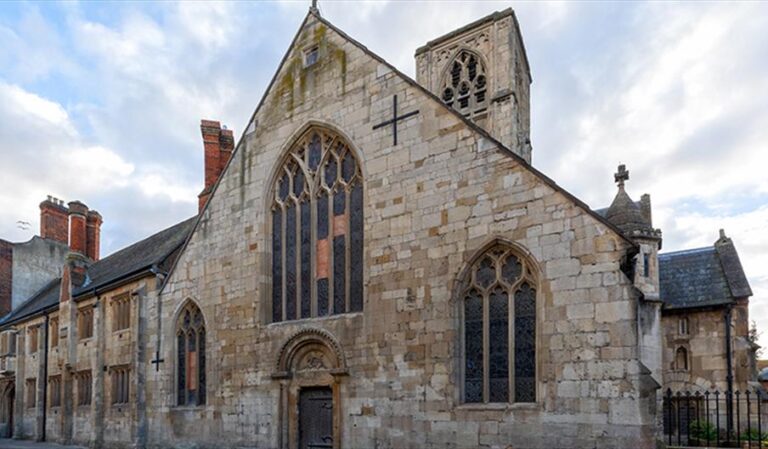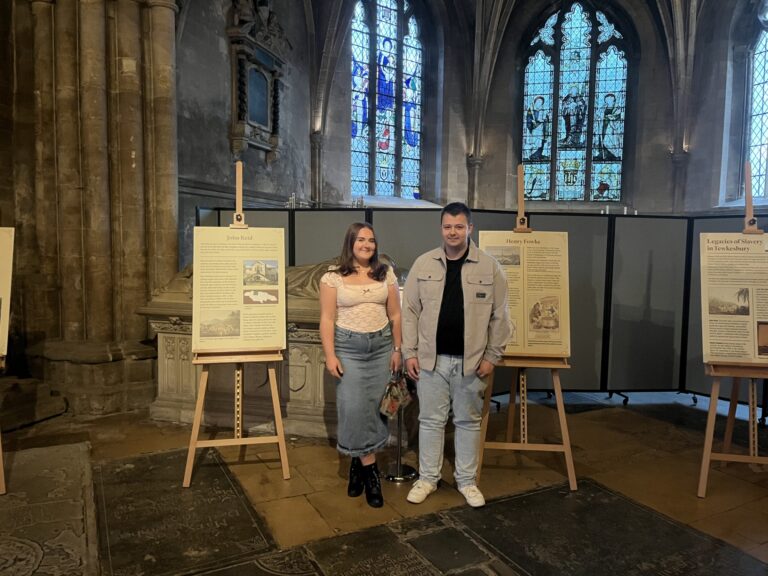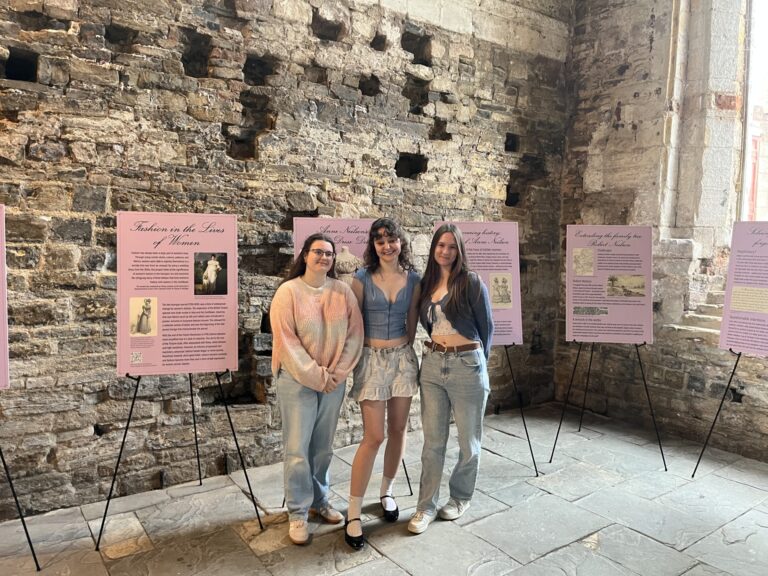| CC4HH
Cheltenham’s Womens Suffrage campaign
Project conducted by: Anna Cardy, Laura Collins, Bradley Dickinson, James Juden, Sharmaine Roch, Dan Wills.
Jump to: Militancy in Cheltenham | Key Figures | The 1911 Census Evasion
2018 marked the centenary of the 1918 Representation of the People’s Act by which women over the age of thirty gained the right to vote for the first time in Britain. Our group examined the nature of the suffrage movement in Cheltenham and Gloucestershire.
Advocates of Militancy and Non-Militancy
The Suffrage campaign was divided into two separate trends: the Suffragists and the Suffragettes. The Suffragettes were the more militant of the two groups. They used violence and terror in their campaigns. The Suffragists were more diplomatic and constitutional in their approach.
Militancy in Cheltenham
Militancy has only a limited place in Cheltenham’s suffrage history.
A hoax bomb was placed on the steps of Cheltenham Town Hall on 27 August 1913. Attributed to the Suffragette campaign, the bomb had ‘Votes for Women’ written on its side in red paint.
In January 1914, a fire at St Paul’s Teacher Training College, (now Francis Close Hall) was attributed to Suffragettes, although no evidence was found for this.


Photographs from: Special Collections and Archives
(University of Gloucestershire)
The Alstone Lawn Fire, Sunday 21 December 1913
Alstone Lawn was subject to a Suffragette arson attack. Flames were spotted coming from the house at 5am. The fire brigade arrived and found that the fire was no accident. The wooden staircase in the centre of the house was destroyed, leaving a ten-foot hole in the roof. The rest of the house was undamaged.
The Police found Suffragette literature at the site and footprints of stockinged feet at the property, along with an empty two-gallon can containing traces of paraffin. That morning, two young women were arrested along Tewkesbury Road; suspicions were aroused as their clothes smelt of paraffin. The two suspects were not local. They had arrived in Cheltenham on a train from Birmingham the afternoon before the fire. Cheltenham now yielded two prisoners for the suffrage cause.


While in police custody, the two suspects were uncooperative, refusing to give their names and addresses. They were named ‘Red’ and ‘Black’ on the charge sheet and in local newspapers. Both hardly spoke except to complain of ‘man-made laws’ and went on hunger strike to protest against their arrest. The women were eventually taken by train to Worcester Gaol.
The reaction was recorded in the local newspapers, the Gloucestershire Echo and the Cheltenham Chronicle and Gloucestershire Graphic. In the Echo, (26 December 1913), one individual writes that ‘I am not the owner of Alstone Lawn, but as I own a house in Cheltenham I am sending a subscription to the Anti-Suffragists association and simply sign myself IMPERIALIST’. This suggests that militancy could hinder the suffrage cause and could have a negative impact on public opinion.
Key figures
Mrs Harriet McIlquham
Born in London’s Brick Lane, and with her husband James Henry McIlquham, Harriet McIlquham was involved in the early Suffrage Movement. She played an active role in Cheltenham. She spoke at the Corn Exchange in 1877 and became involved in national groups, such as the Women’s Franchise League. She was President of the National Society in 1889 and co-founded the Women’s Emancipation Union in 1892.
Harriet McIlquham was a strong advocate of equality in access to education and employment for working-class women in particular. She became a Poor Law guardian for Boddington in 1881, the first married woman to hold the post. The belief that working-class women should have the right to vote alongside those born into privilege put her on the radical wing of the movement.

Mrs Florence Earengey and Dr William Earengey
Florence was born in Cheltenham and was married to William Earengey. Both were active in the Suffrage Movement. Mrs Earengey was in charge of literature for the Cheltenham branch of the National Union of Women’s Suffrage Societies (1907) and was involved in other suffrage organisations; including the Women’s Social and Political Union, the Women’s Freedom League (1908); which she was honorary secretary and became President. In 1911, she and her daughter evaded the census as part of a national campaign.
Mr Earengey was also active in the Suffrage Movement, chairing meetings for the WFL Cheltenham branch and in 1913, becoming president of the Tewkesbury branch of the National Union of Women’s Suffrage Societies. He was a member of the Men’s League for Women’s Suffrage. Unlike his wife, he was unable to evade the census due to his legal career and because he was not willing to risk the £5 fine or two months in prison.


Mrs (Rosa) Frances SwiNey
Frances was born in India in 1847. She married Major John Swiney and was a mother to six children. In 1881 the family moved to Cheltenham where Frances became involved in local Suffrage campaigns and meetings. She also campaigned for the rights of working-class women.

In 1896 Frances Swiney was involved in the founding of the Cheltenham Women’s Suffrage Society (WSS) and became president in 1903. She was particularly active in writing and publication: The Awakening of Women, or, Woman’s Part in the Evolution (1899) and Woman and Natural Law (1906). She was also involved with the League of Isis, whose objectives focused on the protection of motherhood, as well as rational and humane sex relations. She was a member of a number of prominent reform organisations, including the Women’s Freedom League (WFL) and the Malthusian League.
Madame Lillian Borovikovski
Madame Lillian Borovikovski, born 1880, represents a different approach to the suffrage movement. She was secretary of the WFL from 1912, but her political life was cut short when she died at age 46 in Gloucester Mental Hospital.
Florence Earengey described Borovikovski as ‘the first member of the local branch to suffer imprisonment in the cause of women’s enfranchisement’. Borovikovski was arrested when the WFL attempted to storm the House of Commons to achieve a hearing with Prime Minister Asquith. She was one of eight women arrested.
The 1911 Census Evasion
The 1911 ‘No Vote, No Census’ initiative was deployed in Britain as a political weapon. Cheltenham played a major role in the nationwide campaign. Edith How Martyn helped to plan the initiative in Cheltenham.
The 1911 census required personal information, including a woman’s marital status, the number of children they had and their occupation. The 1911 requirements were regarded as intrusive and insensitive, especially as women did not have the right to vote.


The ‘No Vote, No Census’ initiative encouraged women to boycott the census. Vanishing for the vote was considered a form of protest. The slogan ‘Women do not count, neither shall they be counted’ was adopted.
Fifty-three Cheltenham residents evaded the 1911 census, including Ruth and Theodora Mills and Florence Earengey. Earengey’s census return stated: ‘The other members of this household were away as a protest against women having no parliamentary vote’.
The 1911 census required the householder to record information rather than a census enumerator. Many used this as an opportunity to distort government figures in response to women not yet having the vote.
Former Cheltenham resident and WSS member Mary Stables 1911 census return read “No Vote No Census. A Mrs. Stables if deprived of her citizen’s right of voting, she declines to make a return of either her visitors, family or servants in the year of 1911.”
Mrs Frances Stirling wrote ‘This Form is filled through the magnanimity of a Suffragette. Hoping that a more generous and just Legislation for Women will soon be forthcoming from these in Power in Great Britain’. In the occupation column, she describes herself as ‘of Private means, WSPU Suffragette’, and her daughter was described as a WSPU worker.
Do you think the Suffragettes helped or hindered the Suffrage campaign in Cheltenham?



